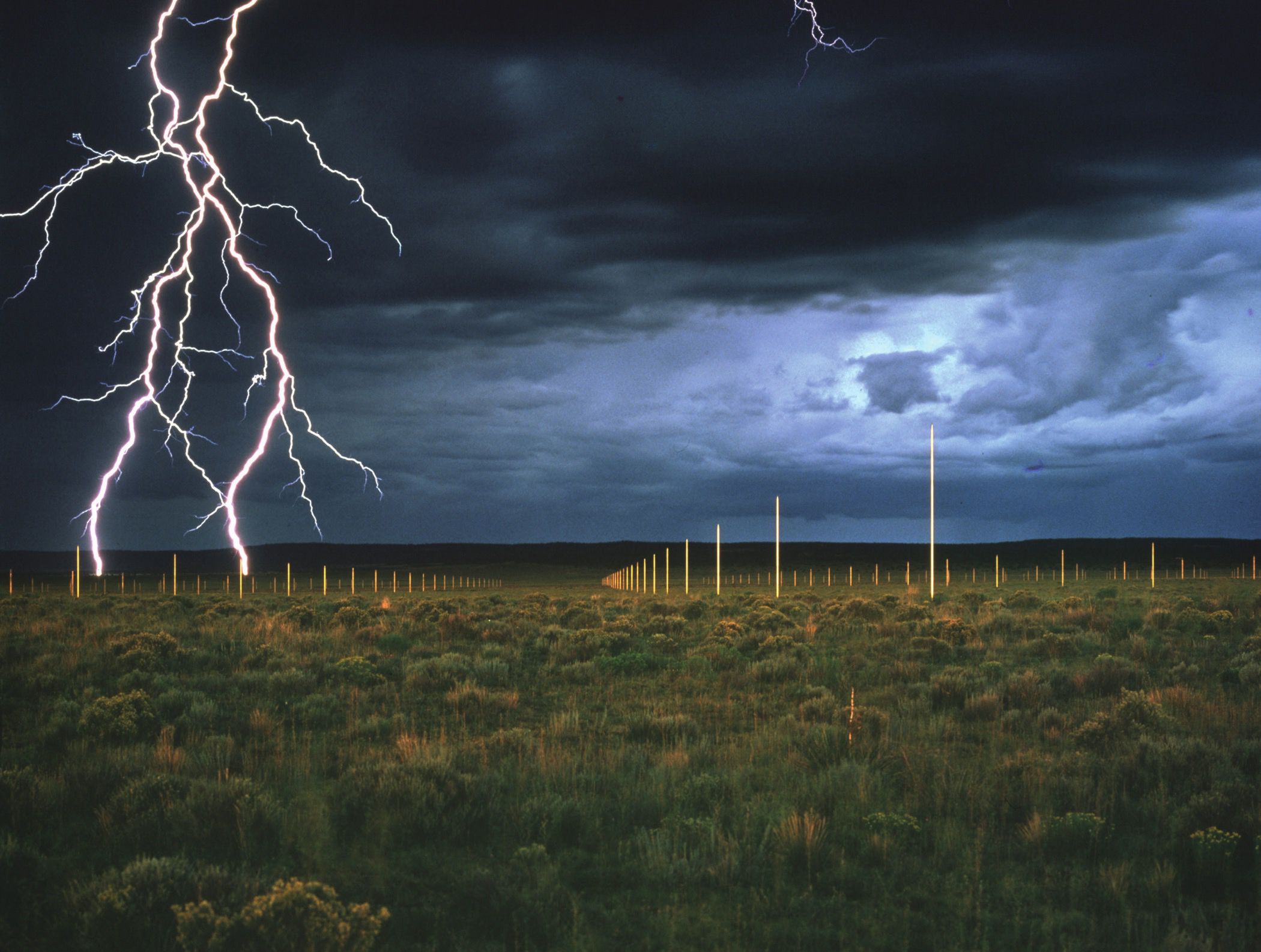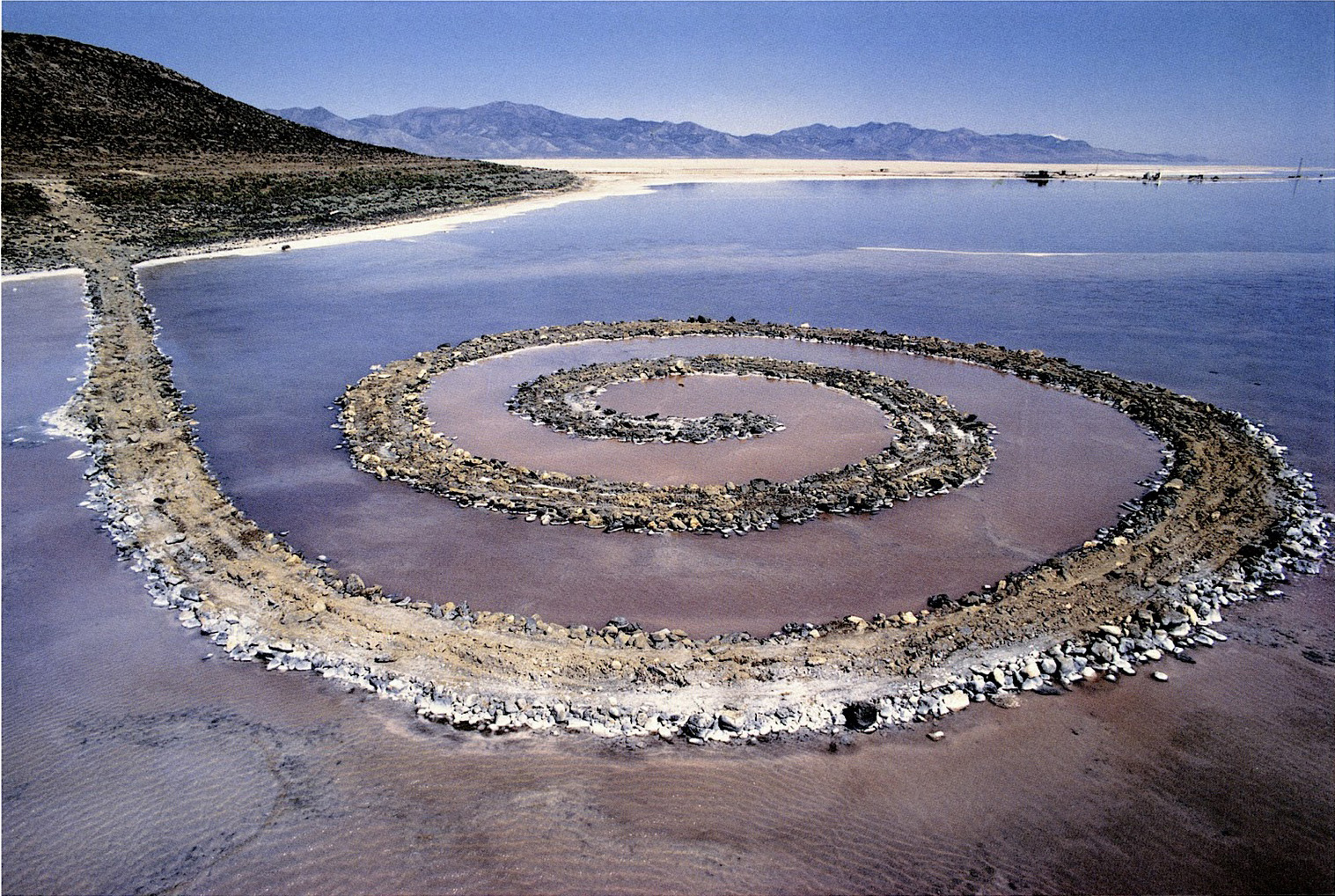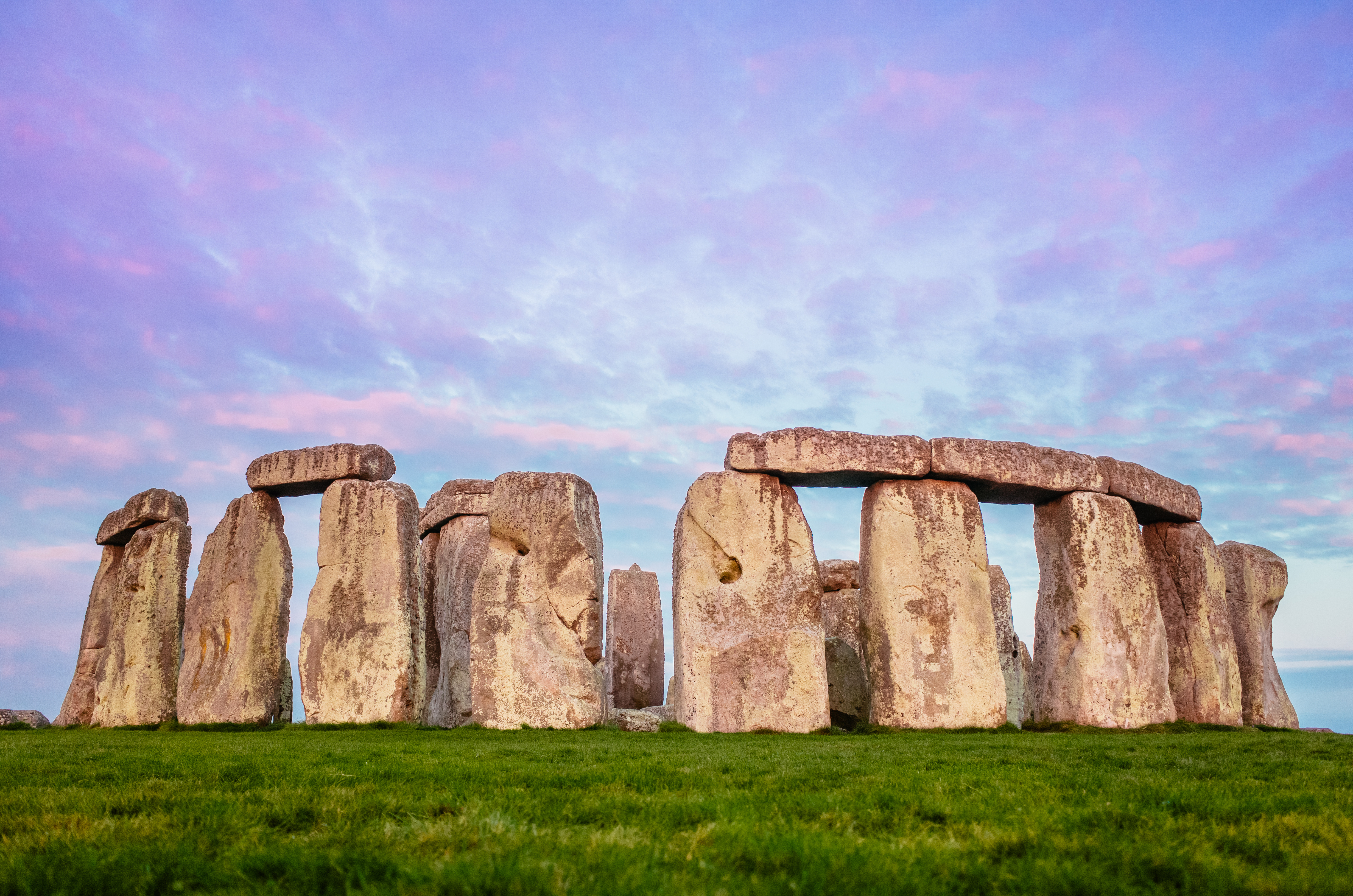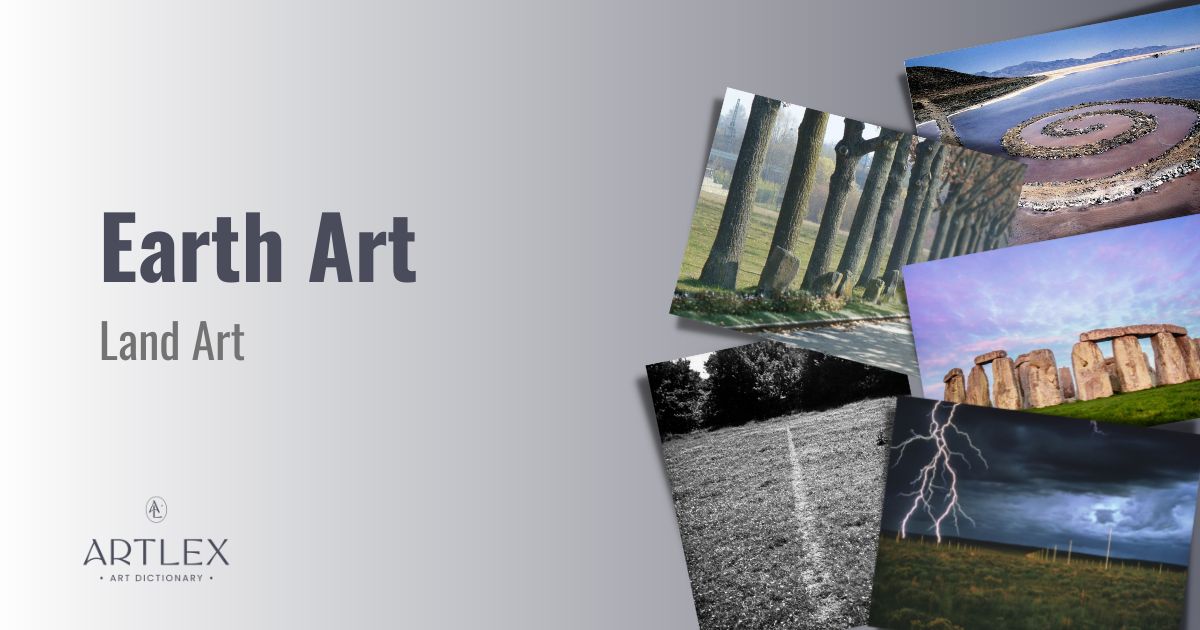What is Earth Art?
Earth art, also known as land art, earthworks, or environmental art, refers to a visual arts movement that began in the 1960s and 70s, primarily in the U.K and U.S. Earth art took nature as its central theme and artists in the movement predominantly used natural materials to construct artworks, including stones, moss, leaves, wood, earth, or mud, for example. Most artworks took the form of sculptures and installations that were constructed within a specific external natural environment.
The movement was first popularized in the late 1960s and early 70s when artists began to move outside of galleries as a reaction against the commodity status of art at the time. They wanted to expand the boundaries of what was considered to be art and to re-evaluate the relationship between humanity and nature.
Although the movement was short-lived, it has influenced contemporary, conceptual, and the visual arts, and continues to this day in other forms of environmental art, both inside and outside gallery spaces. The use of natural materials and the emphasis of site-specific works are two of the movement’s most salient features.
Who Were the First Artists to Make Earth art?
Humans have been creating art using natural materials in natural environments for millennia, including cave drawings, stone sculptures, engravings, and paintings to name a few. The terms Earth art, land art, and environmental art, however, only came to prominence in the late 1960s when American and British artists began to explore natural environments and natural materials. Early proponents of environmental art began to conceive or large-scale earth projects involving traditional sculpture and landscape architecture.
Walter De Maria
Walter De Maria was an American artist, sculptor, and composer who began producing land art and installation art around 1968. He was part of the initial movement of land artists and made several artworks in the deserts of the south-west U.S. In his work he emphasized the importance of the capacity of land art to engage the viewer in contemplation about the Earth, nature, the landscape, and art’s relationship to the Universe.

The Lightning Field (1977), his most famous work, is atypical of land art because its structure consists of 400 stainless steel posts, a non-natural material. The posts are positioned in a grid in a remote part of the desert in western New Mexico. The grid covers an area measuring 1 mile by 1 kilometre and acts as a conductor during lightning strikes, as well as changing in appearance according to changes in the weather and time of day.
Robert Smithson
Another early proponent of environmental art in the U.S. was Robert Smithson, a sculptor, writer and photographer working within the fields of Earth art, post-minimalism, and conceptual art. His artistic practice often involved incorporating drawing and photography into his works, as well as selecting natural sites that were in some way damaged, as such his installed works would suggest the capacity for renewal or rebirth within the given locale.

His most famous work is Spiral Jetty (1970), an earthwork sculpture made entirely of the natural materials already located at Utah’s Great Salt Lake, including salt crystals, mud, and basalt rocks. The structure juts out from the shore of the lake in an enormous coil, and measures 1,500 feet in length.
Andy Goldsworthy
Another significant artist who is still working in environmental art to this day is Andy Goldsworthy, a British sculptor and photographer known for his site-specific installations. He typically uses natural materials and his works often emphasize the effects of time on materials. His works are typically made of natural materials, such as ice, rocks, branches, and leaves. According to Goldsworthy, “It’s not about art,” but rather “the need to understand that a lot of things in life do not last.” After studying at Bradford College of Art and later at Preston Polytechnic, Goldsworthy moved to Scotland in 1985, and began making artworks inspired by Robert Smithson and other American land artists.

Joseph Beuys
One of the early proponents of land art in Europe was the artist Joseph Beuys, a German sculptor and performance artist who was active in Germany, the U.S and Europe from the 1950s to the 1980s. Perhaps his most notable land art projects are his “social sculptures,” which were participatory sculptures that sought to establish art nature dialogues. In the early 1960s he was a member of an art movement called the Fluxus movement, an international group of artists who sought to blur the boundaries between art forms and practices, especially emphasizing the everyday, as well as projects outside of galleries and institutions.
The History of Earth Art
Since prehistoric times, art has been created using natural materials within natural settings. Prehistoric earth art includes artworks such as Stonehenge, a stone monument on Salisbury Plain, Wiltshire, which consists of an outer ring of vertical sarsen standing stones, topped by horizontal lintel stones. There is a smaller ring of blue stones within this larger ring, and within that, free-standing trilithons and two vertical Sarsens connected by a lintel.

Earth art itself emerged in the U.S in the 1960s when artists and sculptors sought to emphasize humanity’s relationship with the natural world and to shift art forms away from the manufactured and synthetic towards natural materials.
The movement developed from conceptualism and minimalism partly as a reaction against what was seen as the excessive commoditization of art, especially in the U.S. in the late 1960s. Many of the ideas for artworks were drawn from humble, everyday objects, and Arte Povera. The movement embraced simplicity and minimalism with many works stressing interaction with the land.
In the early 1970s the movement began to diminish due to a lack of financial support and the general economic decline across the U.S. and Europe. Land artists relied mostly on wealthy patrons and private donors to support their projects, and by the mid-1970s, a lot of financial support had ceased. Furthermore, Robert Smithson, one of the movement chief proponents, died tragically in a plane crash in 1973. However, Earth art is still being made to this day, though the movement itself is more sprawling and diversified.
How is Land Art Created?
Land art is typically created using natural materials that are found in a given environment. Often, artworks are incorporated into the landscape itself, or by using the already available materials in a specific landscape. A good example of this is the minimal art of Richard Long. His work, Sahara Circle, is a simple stone circle and a cleared area made in the Sahara desert using the stones already located there. Long’s artworks often involved making simple, temporary alterations to the environment, including the technique of simply walking across the earth until he had made a mark.

Another work of his, A Line Made By Walking (1967), was made simply by Long walking in a straight line across a field of grass, and then photographing the line. His technique was considered subversive in its simplicity because it went against the grain of the traditionally expressive gesture central to painting, for example.
In some cases, land art is made using materials collected in the environment, and then installed inside a gallery or in another internal space. Typically, artworks are made using organic materials that are taken directly from nature, such as stones, gravel, twigs, grass, bark, sand, water and soil, to name a few.
What are the Characteristics of Environmental Art and What is its Purpose?
All environmental art seeks to engage us in a dialogue between art and nature, human and cosmos, the constructed and the natural. Typically, artworks are made only using natural materials, but there are exceptions.
Typically, the finished works of art would be photographed and documented using maps. These could then be displayed in a gallery. Those which are installed within the landscape are typically left exposed to the elements, gradually disintegrating and disappearing back into the landscape over time.
Many environmental artworks seek to emphasize the ephemerality of the artworks, being part of nature, and returning to nature, rather than being carefully preserved in controlled environments such as galleries and museums.
Essentially, environmental art rejected traditional ways of presentation and installation in that it typically moved away from internal controlled spaces that depended on the exchange of art as a commodity.
The artwork was then liberated from the status of commodity, as an object merely to be viewed and then purchased. Furthermore, artworks sought to blur the lines between art and nature, human-made objects and those made by the Universe. Natural materials were preferred because they have already been created and are characteristic of the environment in which they are found.
Earth Art in the Contemporary Art World
Earth art continues to this day in the contemporary art world in diversified art forms. Andy Goldsworthy is still active in the field of environmental art and his work has been the subject of two documentary films, Thomas Riedelsheimer’s Rivers and Tides: Andy Goldsworthy Working with Time (2001), and its follow-up, Leaning Into the Wind (2018).

The American sculptor and earthwork artist Charles Ross conceived of a work called Star Axis in 1971, which is an architectonic sculpture that is aligned with the geometry of the Earth and the stars. He began construction in 1976 on a mesa in New Mexico. To this day the work is still undergoing construction. The structure is made of the natural materials of sandstone and granite, and once it is finished, it will measure eleven stories high and 1/10th of a mile across.
Notable Earth Artworks
- Robert Smithson’s Spiral Jetty (1970, U.S, 1938 – 73)
- Walter De Maria (U.S, 1935 -), notable examples include The New York Earth Room (1977) & The Lightning Field (1977).
- The “social sculptures” of Joseph Beuys (Germany, 1921 – 1986), including a piece for documenta 7 (1982) that involved basalt stones and the planting of oak trees.
- The Mud Man and Moss Maiden sculptures in the Lost Gardens of Heligan, Cornwall, England.
Related Art Terms
- Conceptual art
- Minimalism
- Sculpture
- Eco-feminism
- Arte Povera

